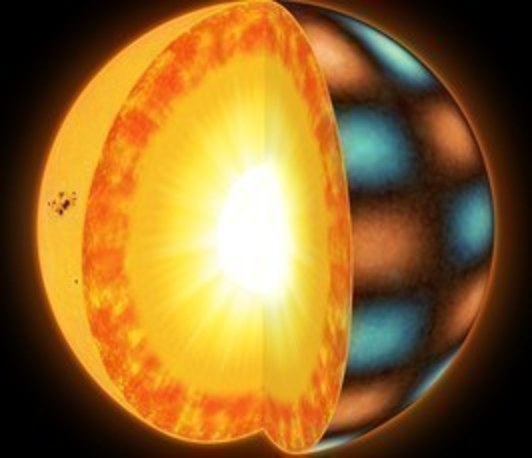MPS Seminar: Where are all the water worlds - Exoplanet system detection & characterization with Gaia (Simon Albrecht)
- Datum: 23.05.2025
- Uhrzeit: 11:00 c.t. - 12:00
- Vortragende(r): Simon Albrecht
- Aarhus University, DK
- Ort: Max-Plack-Institut für Sonnensystemforschung
- Raum: Auditorium
- Gastgeber: René Heller

A recent high-profile study
suggested the existence of a distinct population of water worlds—planets with
significant water content. In the first part of this talk, I revisit this claim
using an updated and expanded sample along with alternative statistical tools,
showing that the data support only two populations: rocky super-Earths and gas
dwarfs, with no compelling evidence for a third, water-rich group.
The second part of the talk focuses on how current and upcoming data from Gaia are enabling entirely new types of investigations. I will begin by discussing the detection and confirmation of substellar companions using Gaia Data Release 3 (DR3) in combination with radial velocity (RV) data. I will then present results from our ongoing RV follow-up campaigns in both the Northern and Southern hemispheres, including recent planet confirmations and the identification of false positives. Next, I will highlight findings based on Gaia’s <vbroad> parameter, revealing a strong correlation between orbital eccentricity and spin–orbit misalignment in binary stars. With Gaia DR4, this technique will become applicable to exoplanet systems as well. I will conclude with an outlook on what we can expect, using DR4 epoch astrometry, for mutual orbital inclination measurements — an important step forward in constraining planetary architectures and formation histories
The second part of the talk focuses on how current and upcoming data from Gaia are enabling entirely new types of investigations. I will begin by discussing the detection and confirmation of substellar companions using Gaia Data Release 3 (DR3) in combination with radial velocity (RV) data. I will then present results from our ongoing RV follow-up campaigns in both the Northern and Southern hemispheres, including recent planet confirmations and the identification of false positives. Next, I will highlight findings based on Gaia’s <vbroad> parameter, revealing a strong correlation between orbital eccentricity and spin–orbit misalignment in binary stars. With Gaia DR4, this technique will become applicable to exoplanet systems as well. I will conclude with an outlook on what we can expect, using DR4 epoch astrometry, for mutual orbital inclination measurements — an important step forward in constraining planetary architectures and formation histories